Shoshone National Forest
- December 28, 2023
- 0 comment
Shoshone National Forest stands as a testament to the untamed beauty of the American wilderness. Located within the rugged embrace of the Rocky Mountains, Spanning over 2.4 million acres in northwestern Wyoming, this expansive forest, established in 1891, represents not only the nation’s first national forest but also a sanctuary where nature’s splendors unfold in diverse and breathtaking forms. From the towering majesty of Gannett Peak, Wyoming’s highest mountain, to the pristine wilderness areas like the Popo Agie and Fitzpatrick Wildernesses, Shoshone captivates adventurers and nature enthusiasts alike. Its landscapes paint a vivid canvas, boasting alpine meadows, dense forests of lodgepole pine and quaking aspen, and crystal-clear lakes reflecting the towering peaks above.
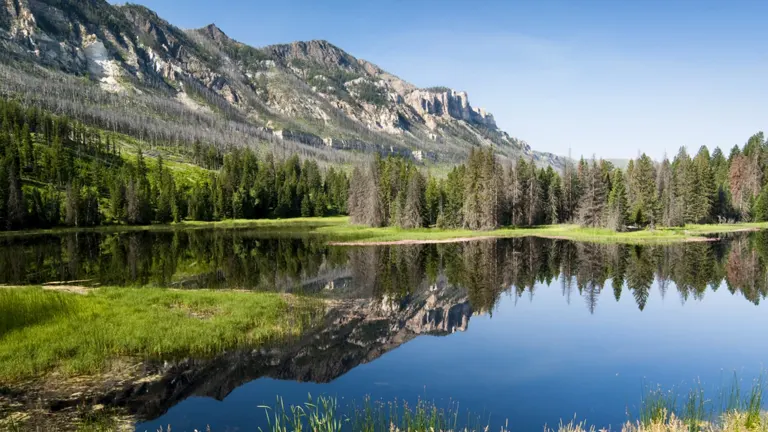
Beyond the visual spectacle, Shoshone National Forest harbors a rich tapestry of flora and fauna, with over 700 grizzly bears, diverse bird species, and elusive predators roaming its vast expanses. This haven for outdoor enthusiasts offers an array of recreational pursuits, from hiking along over 1,600 miles of trails to fishing in “Blue Ribbon Trout Streams” and scaling the heights of the Wind River Range’s granite peaks. Shoshone National Forest, where the echoes of untamed wilderness persist, invites all who seek communion with nature to explore its pristine realms and discover the enduring magic of the American West.
Characterizing Features of the Shoshone National Forest
- Diverse Ecosystems and Elevations: Shoshone National Forest boasts a remarkable range of elevations, stretching from 4,600 to 13,804 feet. This vast altitude spectrum gives rise to diverse ecosystems, from lower elevations adorned with sagebrush and grass-dominated vegetation to towering subalpine fir and spruce forests at higher altitudes. This diversity fosters a mosaic of plant life, including iconic species like lodgepole pine, quaking aspen, and Rocky Mountain juniper, creating a haven for botanists and nature enthusiasts.
- Flora and Fauna Richness: The forest is home to a staggering array of flora, with the Greater Yellowstone Ecosystem, of which Shoshone is a part, boasting over 1,700 documented plant species. Noteworthy are endemic species like whitlow grass and the north fork Easter daisy, adding splashes of vivid colors during the spring and summer. The fauna is equally impressive, with 335 wildlife species, including the grizzly bear, Bighorn sheep, and the elusive gray wolf, making Shoshone National Forest a thriving habitat for wildlife enthusiasts and conservationists.
- Challenges from Exotic Species: While native species thrive, the forest faces challenges from non-native flora like Canada thistle and Musk thistle, disrupting the delicate balance. Invasive fauna such as the mountain pine beetle poses a significant threat, impacting vast swaths of timberland. Forest management strategies, including controlled burns and insect control measures, are crucial for mitigating the impact of these invasive species and preserving the forest’s ecological integrity.
- Critical Grizzly Bear Habitat: Shoshone National Forest serves as one of the last strongholds for the threatened grizzly bear in the contiguous U.S. With approximately 125 grizzlies in the forest and 700 in the Greater Yellowstone Ecosystem, the management of human-bear interactions becomes paramount. Conservation efforts, including the capture and relocation of nuisance bears, showcase the delicate balance between human safety and preserving these magnificent creatures.
- Pristine Wilderness Areas: Encompassing four wilderness areas—North Absaroka, Washakie, Fitzpatrick, and Popo Agie—56 percent of Shoshone National Forest is designated as wilderness. This protective status ensures minimal human impact, prohibiting activities like logging and road construction. These undisturbed havens, including the Cirque of the Towers and the Absaroka-Beartooth Wilderness, beckon adventurers seeking solitude and unspoiled natural landscapes.
- Geological Wonders: The forest’s geography unfolds with geological marvels such as the Absaroka Mountains, shaped by volcanic activity during the Eocene epoch. Gold mining history, as seen in the ghost town of Kirwin, adds a historical layer to the landscape. The Beartooth Mountains, with Precambrian granitic rocks among the Earth’s oldest, and the Wind River Range, primarily composed of Precambrian granitic rock, showcase the geological richness awaiting exploration.
- Recreational Paradise: Drawing over half a million visitors annually, Shoshone National Forest beckons outdoor enthusiasts with diverse recreational opportunities. From 1,600 miles of trails for hiking and horseback riding to over 500 lakes and 1,000 miles of streams for fishing, the forest offers a playground for nature lovers. Winter activities like cross-country skiing and snowmobiling, facilitated by groomed trails, extend the allure into the colder months.
- Scenic Drives and Entrances to Yellowstone: Shoshone National Forest forms the eastern boundary of Yellowstone National Park, and its scenic roads, including the Beartooth Highway and Chief Joseph Scenic Byway, not only provide breathtaking views but also serve as gateways to the iconic national park. These routes, recognized as scenic byways, epitomize the stunning landscapes that define the American West.
In essence, Shoshone National Forest is a multifaceted tapestry of natural wonders, offering a harmonious blend of ecological diversity, wildlife conservation, geological fascination, and recreational bliss for those fortunate enough to explore its enchanting realms.
History
Established on September 22, 1891, Shoshone National Forest holds the distinction of being the first national forest in the United States. Located in the heart of Wyoming, its creation marked a pioneering step in American conservation efforts, driven by the desire to preserve and manage natural resources. Named after the Shoshone Native American tribe that has long inhabited the region, the forest’s history intertwines with the westward expansion, as pioneers traversed its landscapes during the late 19th century.
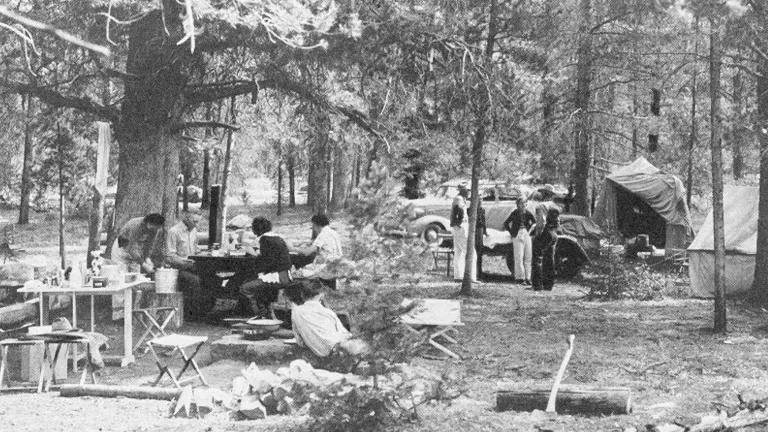
Over the decades, Shoshone National Forest witnessed various historical milestones, from the establishment of the Civilian Conservation Corps (CCC) camps during the Great Depression to the implementation of modern conservation practices. Its diverse ecosystems, ranging from high alpine meadows to dense forests, have provided a canvas for scientific research and environmental stewardship. Today, Shoshone National Forest stands not only as a testament to the foresight of conservationists in the late 1800s but also as a living chronicle of America’s commitment to preserving its natural heritage.
Importance in Conservation and Recreation of Shoshone National Forest
Shoshone National Forest holds paramount importance in both conservation and recreation, embodying a vital aspect of America’s commitment to preserving its natural treasures. Established in 1891 as the inaugural national forest, it serves as a testament to the nation’s early dedication to conservation, offering a sanctuary for a rich tapestry of flora and fauna. Encompassing over 2.4 million acres in Wyoming, it not only stands as a haven for biodiversity but also plays a crucial role in maintaining ecosystems essential for ecological balance. The forest’s strategic location adjacent to Yellowstone National Park positions it as a key link in the Greater Yellowstone Ecosystem, facilitating the conservation of numerous plant and animal species, including the iconic grizzly bear and bighorn sheep.
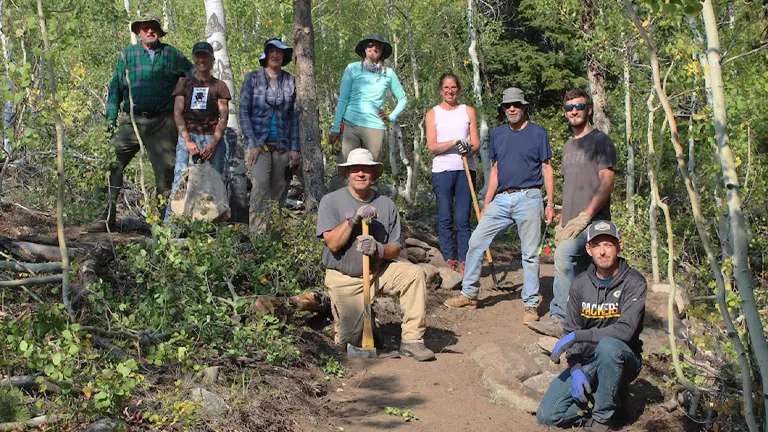
Beyond its conservation significance, Shoshone National Forest beckons adventurers and nature enthusiasts alike, drawing over half a million visitors annually. With its rugged mountain ranges, pristine lakes, and extensive trail systems, the forest offers a diverse range of recreational opportunities. Hiking trails wind through its expansive landscapes, inviting backpackers and horseback riders into remote corners like the Cirque of the Towers. Anglers are drawn to “Blue Ribbon Trout Streams,” while winter enthusiasts revel in cross-country skiing and snowmobiling on groomed trails. The forest’s accessibility through designated scenic byways, such as the Beartooth Highway, not only enhances its recreational appeal but also fosters an appreciation for its scenic grandeur. Balancing conservation imperatives with recreational pursuits, Shoshone National Forest stands as a model for harmonizing human engagement with nature while safeguarding the ecological integrity of this enduring wilderness.
Unique Location of Shoshone National Forest
Located in the heart of the Rocky Mountains in Wyoming, Shoshone National Forest spans over 2.4 million acres, making it the first designated national forest in the United States. Its strategic position places it in proximity to Yellowstone National Park, forming an integral part of the Greater Yellowstone Ecosystem. The forest shares borders with Yellowstone to the west, Bridger-Teton National Forest to the west along the Continental Divide, and Custer National Forest to the north along the Montana border.
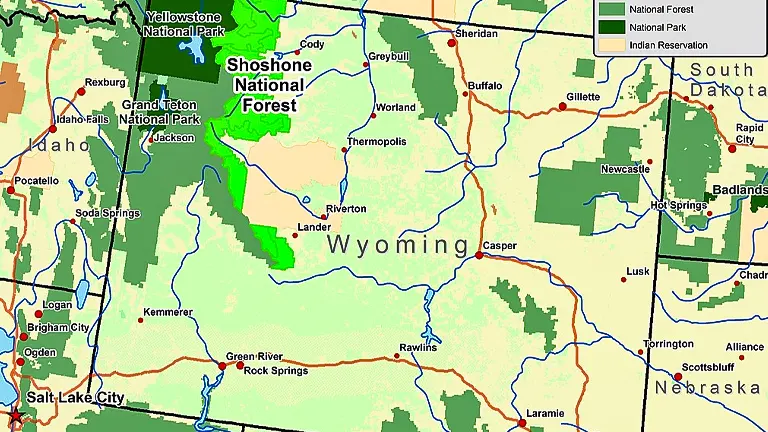
To the east, its boundaries include private property, state-owned lands, and the Bureau of Land Management, while the Wind River Indian Reservation borders its eastern and southern edges. This unique location not only connects diverse ecosystems but also contributes to the overall ecological health of the region. Shoshone National Forest, with its varied topography and significant ecological role, stands as a testament to the beauty and richness found in this unique corner of the American wilderness.
Diverse Vegetation and Unique Plant Species:
- Quaking Aspen (Populus tremuloides): The groves of quaking aspen in Shoshone National Forest contribute to the unique flora. These deciduous trees with distinctive fluttering leaves are prominent at elevations up to 9,000 ft, providing vibrant colors in the fall.
- Lodgepole Pine (Pinus contorta): Another prevalent tree species in the forest, lodgepole pine, is often found alongside quaking aspen. Its slender trunks and distinctive cones are characteristic of the lower to mid-elevation forested areas.
- Rocky Mountain Juniper (Juniperus scopulorum): Along with lodgepole pine, this evergreen species adds to the forested landscape, particularly at elevations up to 9,000 ft.
- Subalpine Fir (Abies lasiocarpa): Thriving at higher elevations, subalpine fir contributes to the diverse ecosystems of Shoshone National Forest. It often coexists with other coniferous species like Engelmann spruce.
- Engelmann Spruce (Picea engelmannii): Found at elevations approaching timberline, Engelmann spruce is part of the forest’s alpine landscape, adapting to the challenging conditions at higher altitudes.
- Whitebark Pine (Pinus albicaulis): This high-altitude tree is crucial to the alpine ecosystem and is often found at or near timberline. Whitebark pine plays a vital role in providing habitat and food for various wildlife species.
- Limber Pine (Pinus flexilis): Resilient to harsh mountain conditions, limber pine is another tree species contributing to the diverse forested areas, especially at higher elevations.
- Cottonwoods (Populus deltoides) and Willows (Salix): Dominating lower elevation riparian corridors, cottonwoods and willows provide critical habitats along waterways. These deciduous species are vital for various wildlife, including birds and beavers.
- Whitlow Grass (Draba): Among the endemic species, whitlow grass stands out with its vivid white flowers during the spring. These unique plants add to the floral diversity of the region.
- Fremont Bladderpod (Physaria fremontii): Another rare species, the Fremont bladderpod, contributes to the unique plant life of Shoshone National Forest with its distinctive yellow flowers.
- Shoshonea (Shoshonea pulvinata): Endemic to the region, Shoshonea is a plant species that adds to the local biodiversity, showcasing adaptation to the specific conditions of the forest.
- North Fork Easter Daisy (Townsendia aprica): Providing vibrant yellow flowers during the spring and summer, the North Fork Easter Daisy is another noteworthy species, contributing to the forest’s visual appeal.
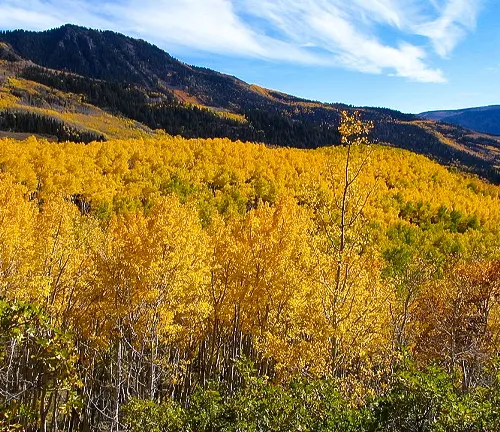
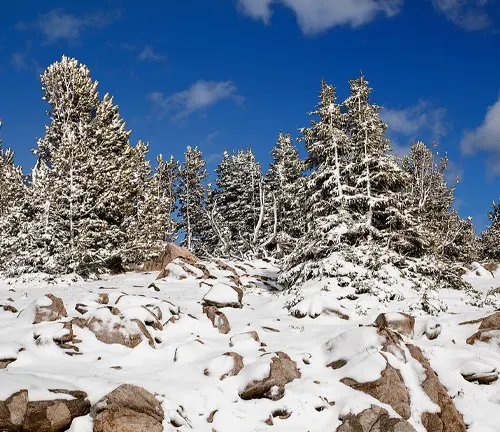
These diverse plant species collectively shape the ecosystems within Shoshone National Forest, showcasing the adaptability of flora to varied elevations and environmental conditions.
Different Species of Mushrooms in Shoshone National Forest
- Fly Agaric (Amanita muscaria): This iconic mushroom with a red cap and white spots is found in Shoshone National Forest. Amanita muscaria forms mycorrhizal associations with various trees, aiding in nutrient exchange and contributing to the forest’s ecological balance.
- King Bolete (Boletus edulis): King Bolete is a mycorrhizal fungus commonly associated with coniferous trees in the forest. Its presence contributes to nutrient cycling and supports the health of the forest ecosystem.
- Honey Fungus (Armillaria mellea): Honey Fungus, a parasitic fungus, is part of Shoshone National Forest’s ecosystem. It plays a role in decomposing woody material and contributes to the natural recycling of nutrients.
- Hedgehog Mushroom (Hydnum repandum): Hedgehog Mushroom is mycorrhizal and often found in association with coniferous trees in Shoshone National Forest. Its spines on the cap’s underside distinguish it, contributing to the forest’s fungal diversity.
- Russula (Russula): Russula mushrooms, characterized by vibrant colors, form mycorrhizal associations with trees in the forest. They contribute to the nutrient cycling processes and add to the overall biodiversity.
- Saffron Milk Cap (Lactarius deliciosus): Saffron Milk Cap is mycorrhizal and associates with coniferous trees in Shoshone National Forest. Its saffron-colored milk and distinctive features make it an integral part of the forest’s fungal community.
- Chanterelle (Cantharellus cibarius): Chanterelle is a mycorrhizal mushroom forming associations with various tree species. Its golden-yellow cap and fruity aroma make it not only ecologically important but also valued for culinary purposes.
- Pine Mushroom (Tricholoma matsutake): Pine Mushroom grows in association with pine trees in Shoshone National Forest. Its presence has cultural significance, and it contributes to the forest’s mycorrhizal network and overall fungal diversity.
- Pinecone Mushroom (Gomphus clavatus): Resembling a small pinecone, this ectomycorrhizal fungus is found in coniferous forests. It forms associations with pine tree roots, playing a role in nutrient exchange and ecosystem health.
- Inocybe (Inocybe): Inocybe mushrooms, characterized by fibrous caps, form mycorrhizal associations with trees. They contribute to nutrient cycling and add to the overall fungal diversity of Shoshone National Forest.
These mushroom species are vital components of Shoshone National Forest’s ecosystem, contributing to nutrient cycling, mycorrhizal associations, and the overall health and biodiversity of the forest. Their presence reflects the complex and interconnected web of life within the forest environment.
Fauna:
- Grizzly Bear (Ursus arctos horribilis): The forest is home to an estimated 125 grizzly bears, making it one of their last strongholds in the contiguous U.S. The grizzly, listed as a threatened species, is carefully managed to maintain a balance between conservation and potential threats to human safety.
- Gray Wolf (Canis lupus): After successful reintroduction in the mid-1990s, the gray wolf now inhabits Shoshone National Forest. This species plays a crucial role in maintaining the ecological balance within the Greater Yellowstone Ecosystem.
- Mountain Lion (Puma concolor): Cougars, or mountain lions, are apex predators in the forest. While rarely seen, they contribute to the ecological diversity by controlling populations of other species.
- Timber Wolf (Canis lupus lycaon): Wolves, part of the successful wolf reintroduction program in Yellowstone, have established permanent packs in Shoshone National Forest. Their presence contributes to the natural order of the ecosystem.
- Canada Lynx (Lynx canadensis): Although the current status is uncertain, Shoshone National Forest is considered critical habitat for lynx recovery. The Canada lynx, listed as threatened, historically inhabited the forest and relies on the ecosystem’s unique characteristics.
- Bighorn Sheep (Ovis canadensis): The rocky terrain and high elevations of Shoshone National Forest provide suitable habitat for bighorn sheep. Despite challenges, a population of around 5,000 bighorn sheep persists in the forest.
- Moose (Alces alces): Moose populations, found in small numbers near waterways, face challenges, possibly due to parasites. Their decline highlights the delicate balance of the ecosystem.
- Elk (Cervus canadensis): With over 20,000 elk in the forest, these large herbivores play a significant role in shaping vegetation and contribute to the overall biodiversity of Shoshone National Forest.
- Bison (Bison bison): Sustainable populations of bison, an iconic species, inhabit the forest, contributing to the ecological health of the region.
- Trumpeter Swan (Cygnus buccinator): While rare, sightings of Trumpeter Swans add to the diversity of waterfowl in the forest, emphasizing the significance of Shoshone National Forest as a habitat for various bird species.
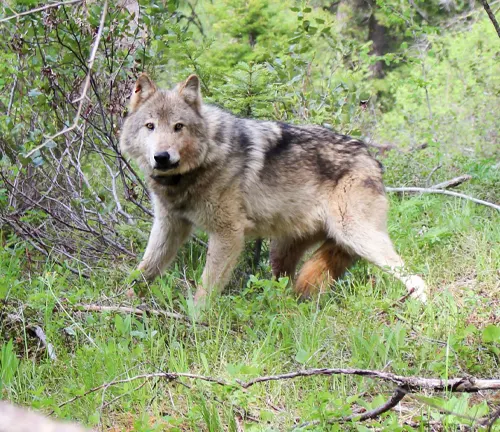
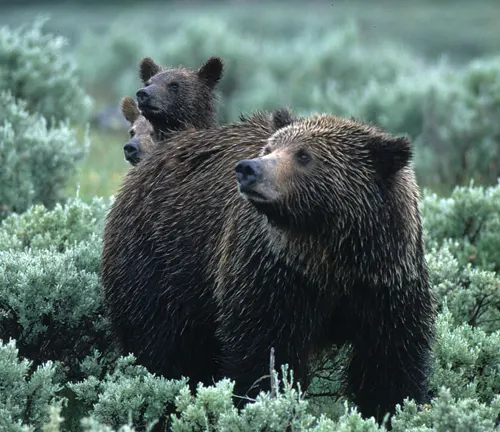
These species collectively contribute to the rich biodiversity of Shoshone National Forest, showcasing the delicate balance of ecosystems within this unique natural environment.
Importance as a Wildlife Corridor and Habitat for Threatened Species
Shoshone National Forest stands not only as a breathtaking landscape but also as a vital wildlife corridor and habitat for several threatened species, playing a pivotal role in regional conservation efforts. As an integral part of the Greater Yellowstone Ecosystem, the forest serves as a critical link for the movement and migration of wildlife, facilitating genetic diversity and the overall health of populations. The presence of threatened species such as the grizzly bear and Canada lynx underscores the forest’s significance in providing refuge and fostering recovery for these vulnerable creatures.
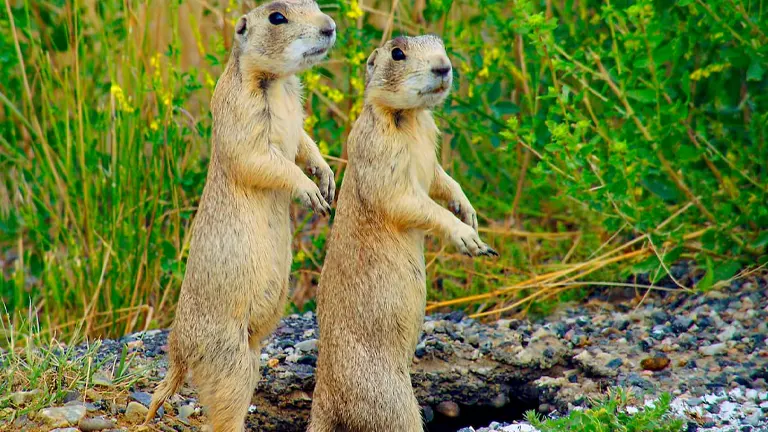
Shoshone National Forest’s expansive and diverse ecosystems, ranging from lower elevations with sagebrush and grass-dominated vegetation to higher elevations hosting unique plant and animal communities, create a mosaic of habitats that cater to a wide array of species. The active management programs, including controlled burns and habitat protection measures, underscore the commitment to maintaining the delicate balance needed for both wildlife conservation and human safety. In essence, Shoshone National Forest stands not only as a picturesque destination for visitors but also as a sanctuary crucial for the survival and well-being of threatened species in the American West.
Activities in Shoshone National Forest for Visitors
1. Scenic Exploration
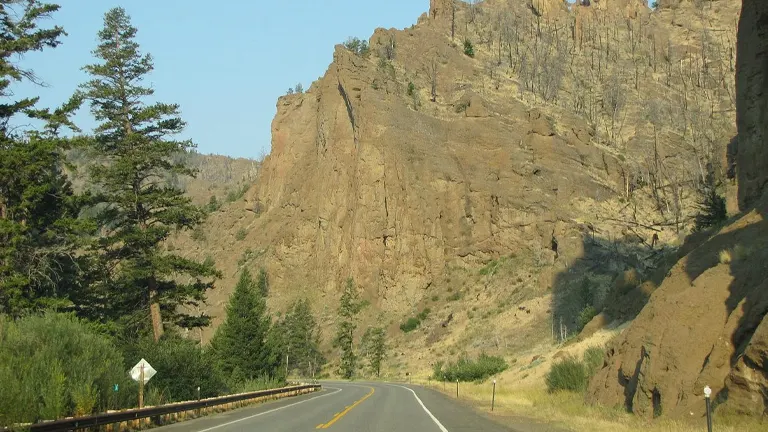
Shoshone National Forest offers visitors an unparalleled opportunity for scenic exploration. With its diverse landscapes, including towering mountain peaks, pristine lakes, and dense forests, the forest provides a visual feast for those seeking to connect with nature. Scenic drives, such as the Beartooth Highway and Chief Joseph Scenic Byway, offer breathtaking views and access to some of the most picturesque spots within the forest.
2. Hiking and Backpacking
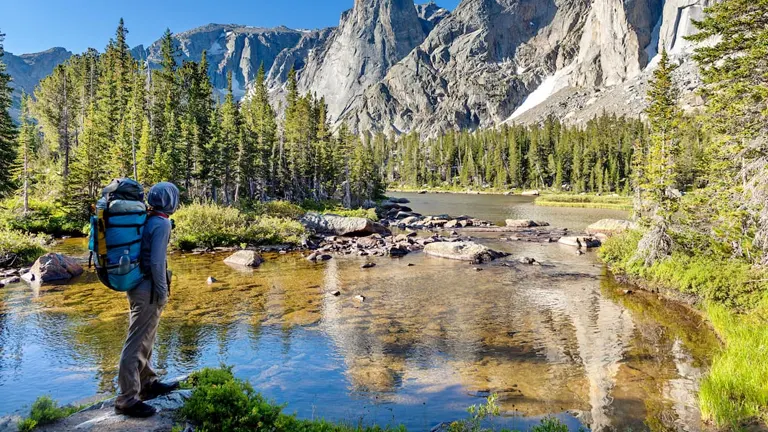
With over 1,600 miles of trails crisscrossing the forest, hiking enthusiasts can explore Shoshone’s natural wonders on foot. Trails vary in difficulty, providing options for both casual day hikers and seasoned backpackers. Popular destinations like the Cirque of the Towers in the Popo Agie Wilderness attract outdoor enthusiasts seeking a more immersive experience in the forest’s rugged beauty.
3. Horseback Riding
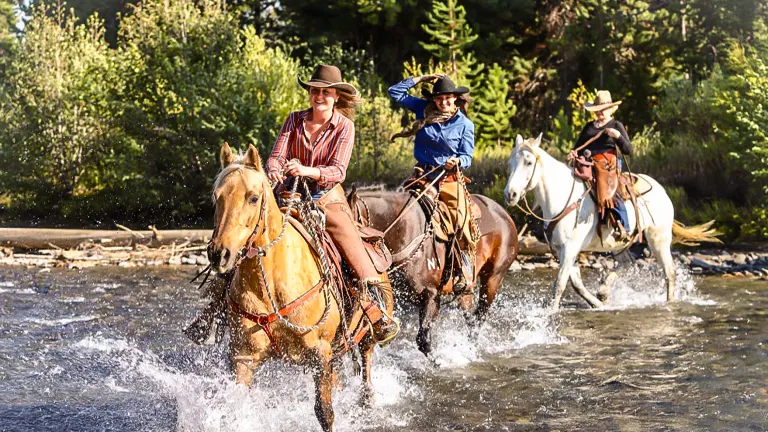
For those seeking a more traditional mode of exploration, Shoshone National Forest accommodates horseback riding. Trailheads throughout the forest offer ample space for trailers and provide access to backcountry areas that are otherwise challenging to reach. The experience allows visitors to connect with the landscape at a leisurely pace, fostering a deeper appreciation for the natural surroundings.
4. Fishing and Hunting
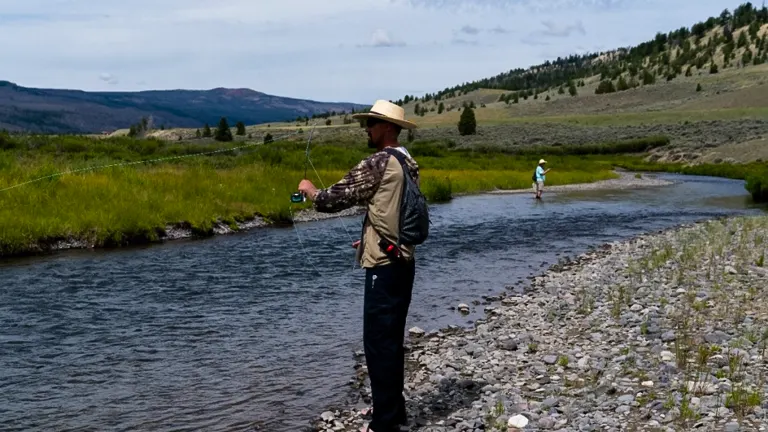
Shoshone National Forest is a haven for anglers and hunters alike. With over 1,000 miles of streams and a myriad of lakes, the forest provides ample opportunities for fishing, with certain water bodies designated as “Blue Ribbon Trout Streams.” Hunting is also permitted, with the forest being home to diverse wildlife, including elk, deer, and various bird species. Licenses, available through the Wyoming Game and Fish Department, ensure responsible and regulated participation.
5. Winter Activities

Embracing the winter season, Shoshone National Forest transforms into a wonderland for winter sports enthusiasts. Cross-country skiing is popular, with 48 miles of groomed trails providing an ideal terrain. Snowmobilers can explore over 300 miles of designated trails, particularly around Togwotee Pass, where consistent snowfall ensures an extended winter season for outdoor activities.
6. Climbing Adventures

The forest’s mountainous terrain, including the Wind River Range and Absaroka Mountains, beckons climbers seeking adventure. Notable spots like the Cirque of the Towers present challenging yet rewarding climbs. The diversity of rock formations and sheer cliff faces in these regions attracts climbers of varying skill levels, making Shoshone a destination for rock climbing enthusiasts.
7. Educational Centers

Shoshone National Forest encourages visitors to deepen their understanding of the ecosystem through educational centers. Visitor centers, such as the one near Cody, Wyoming, provide orientation, maps, and interpretive displays. These resources offer valuable insights into the forest’s geology, flora, and fauna, enhancing the overall visitor experience.
Conservation and Management
- Wilderness Designation: Shoshone National Forest encompasses four pristine wilderness areas: North Absaroka, Washakie, Fitzpatrick, and Popo Agie. These areas, constituting 56% of the forest, hold wilderness designations that provide a higher level of protection. The Wilderness Act of 1964 restricts human alterations, prohibiting road construction, logging, and motorized equipment within these zones.
- Conservation of Biodiversity: The forest, an integral part of the Greater Yellowstone Ecosystem, supports a rich biodiversity. Conservation efforts focus on maintaining the habitat for various species, including threatened ones like grizzly bears and lynx. Strategies involve controlled burns, timber harvesting, and addressing the impact of invasive species, ensuring the ecological balance of the forest.
- Threatened Species Management: Shoshone National Forest plays a crucial role in the conservation of threatened species, particularly the grizzly bear. With approximately 125 grizzlies in the forest, the area is a stronghold for this threatened species. Management involves non-lethal traps for nuisance bears, relocation to remote areas, and, in extreme cases, extermination to mitigate threats to human safety.
- Insect Infestation Mitigation: The forest faces challenges from insect infestations, notably the mountain pine beetle. In 2010, a survey revealed significant impacts on timberland, leading to widespread tree mortality. To counteract this, the forest service employs measures such as controlled burns, timber harvesting, and insecticide application in high-value areas, ensuring the health of the forest ecosystem.
- Controlled Burn Initiatives: Shoshone National Forest implements controlled burns as a proactive measure for forest management. These intentional fires help reduce the risk of uncontrolled wildfires, regenerate vegetation, and create a healthier forest ecosystem. Controlled burns play a vital role in maintaining the natural balance of plant species and preventing the spread of invasive vegetation.
- Visitor Education and Regulations: Conservation efforts extend to educating visitors about responsible practices. Regulations, including mandatory food storage in bear country, aim to minimize human-wildlife conflicts. Bear-proof trash receptacles in front-country zones and precautions in the backcountry contribute to habitat protection and visitor safety.
- Collaborative Conservation Programs: Shoshone National Forest actively collaborates with other National Forests and National Parks within the Greater Yellowstone Ecosystem. These collaborative programs aim to maximize human safety, protect habitats for endemic species, and collectively address conservation challenges across the broader ecosystem.
- Preservation of Pristine Wilderness: The forest’s commitment to wilderness preservation is evident through the stringent protections outlined in the Wilderness Act. Prohibiting road construction, mineral exploration, and logging, these measures ensure that large portions of the forest remain untouched by human activities, preserving their pristine and unspoiled nature.
Recommendation
I highly recommend exploring Shoshone National Forest for a captivating blend of natural beauty and cultural significance. This forest, renowned for its diverse ecosystems, iconic landmarks, and recreational opportunities, offers a unique and immersive adventure. Take part in reflective outdoor activities such as hiking and wildlife observation, actively contributing to ongoing conservation efforts. The scenic trails, historical landmarks, and collaborative conservation programs establish Shoshone National Forest as a crucial destination for those seeking a harmonious combination of nature and recreational exploration.
Conclusion
In conclusion, Shoshone National Forest stands as a testament to the breathtaking beauty and ecological richness that defines the American wilderness. With its diverse landscapes, ranging from the towering peaks of the Absaroka and Wind River Ranges to the serene meadows and pristine lakes, the forest offers a haven for both nature enthusiasts and conservation advocates. The intricate tapestry of flora and fauna, including unique plant species and a plethora of wildlife, paints a vibrant picture of biodiversity. Beyond its natural wonders, Shoshone National Forest beckons visitors with a variety of recreational activities, from hiking and horseback riding to fishing and winter sports. As a vital wildlife corridor and habitat for threatened species, the forest plays a crucial role in conservation efforts. The balance between preservation and recreation is carefully maintained, making Shoshone National Forest a cherished destination where the spirit of adventure and the commitment to environmental stewardship coalesce in a truly remarkable way.
FAQs
- What makes Shoshone National Forest unique among U.S. forests?
Shoshone National Forest stands out for its remarkable diversity, encompassing everything from high alpine terrain to expansive meadows and deep valleys. Its unique geological features and extensive wilderness areas set it apart as a multifaceted gem within the national forest system. - How can visitors explore Shoshone National Forest responsibly?
Responsible exploration involves respecting wildlife habitats, following Leave No Trace principles, and adhering to guidelines set by the forest service. Staying on designated trails and properly disposing of waste ensures that future generations can enjoy the forest’s wonders. - What types of recreational activities are available in Shoshone National Forest?
The forest caters to a range of activities, including hiking, horseback riding, fishing, camping, and winter sports. With over 1,600 miles of trails, 500 lakes, and diverse landscapes, visitors can tailor their experience to their preferred outdoor pursuits. - Are there any endangered species in Shoshone National Forest?
Yes, Shoshone National Forest serves as a crucial habitat for threatened species, including the grizzly bear and lynx. Conservation efforts focus on protecting these species and maintaining a delicate balance between human recreation and wildlife preservation. - How does Shoshone National Forest contribute to conservation efforts?
The forest actively engages in conservation initiatives such as controlled burns, timber harvesting, and wildlife management to address challenges like insect infestations. Its designation as a wilderness area provides heightened protection, preserving the natural landscape. - What is the significance of Shoshone National Forest’s location near Yellowstone National Park?
The forest’s proximity to Yellowstone enhances its role as a wildlife corridor, allowing species like grizzly bears to move between the two areas. This connectivity supports genetic diversity and contributes to the broader conservation goals of the Greater Yellowstone Ecosystem. - Can I encounter grizzly bears while visiting Shoshone National Forest?
Yes, Shoshone National Forest is home to a significant population of grizzly bears. Visitors are encouraged to take precautions, such as securing food properly and adhering to safety guidelines, to minimize the risk of bear encounters. - How does Shoshone National Forest contribute to scientific research and education?
The forest provides a living laboratory for scientific research on topics like ecosystem dynamics and wildlife behavior. Educational programs and interpretive displays at visitor centers further contribute to public understanding of the forest’s ecological importance.
Exploring Shoshone National Forest is a truly unforgettable experience that every nature lover should add to their bucket list. With its vast wilderness, diverse ecosystems, and stunning mountain ranges, this national forest offers a range of outdoor activities that cater to all ages and interests. Whether you’re into hiking, camping, fishing, or wildlife watching, Shoshone National Forest has something for everyone. From the majestic peaks of the Absaroka Mountains to the crystal-clear lakes and rivers, this natural wonderland is a true gem of Wyoming. So, if you’re looking for an adventure of a lifetime, pack your bags and head to Shoshone National Forest for an unforgettable journey into the heart of the wild.


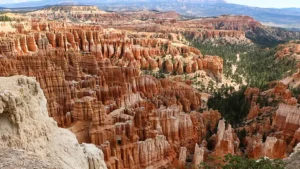
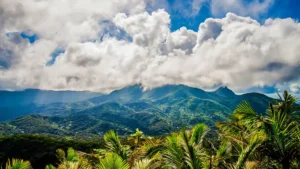

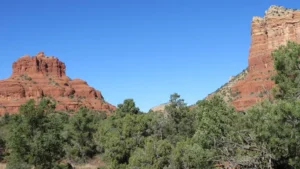
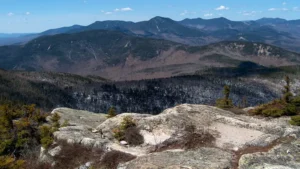
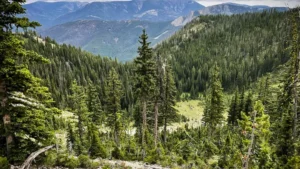

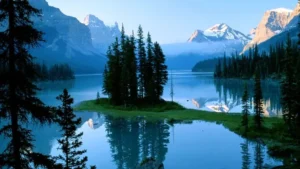
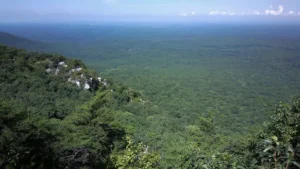
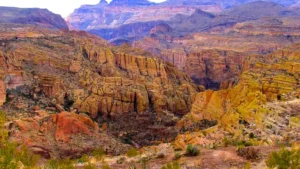
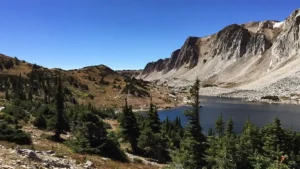
Leave your comment